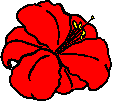 Shields
Gardens
Shields
Gardens
| Home |
| Daylilies |
| Rare Bulbs |
| Clivia |
| Seed Sales |
| E-Mail and Chat |
| Photo Gallery |
| Information |
| Sources |
| Guest Sites |
| Societies and Clubs |
| Links |
| People |
| About Us |
Mealy Bugs are white, fuzzy insects about 1/8th inch long. There are several types. Those infecting the underground parts, root mealy bugs, and those mealy bugs that are found above ground. They are sometimes referred to as wooly aphids. If available, insecticides containing the systemic insecticide imidacloprid seem to be relatively effective against mealy bugs.
Scale Insects are often brought to plants by ants. The ants then tend the scale insects and collect the honeydew they secrete. Treat with a systemic insecticide to kill the scale insects. Repeat regularly to prevent re-infestation.
Amaryllis Borer is the caterpillar or larva of a moth. It is native to South Africa and (as a different species) to Australia. Treat by application of systemic insecticides regularly, starting early in the season before the moth can lay its eggs on the plant or bulb.
Other pests may include spider mites, white flies, and aphids. Treat these with appropriate miticides or insecticides. Check to see what pesticides are available in your area.
Stagnospora or "red scorch" is a fungus that commonly infects most species in the Amaryllidaceae (Amaryllis Family). It is recognizable by the red lesions on the leaves. Treat by removing the most severely infected tissues and then spraying regularly with a systemic fungicide. For more information: ![]()
Bacterial rots are characterized by black, foul-smelling tissue in the center of the plant. It is most often caused by the bacterium, Erwinia carotovora. Treat by removing the black material and the near-by affected tissues. Then treat with diluted hydrogen peroxide (H2O2) or sodium hypochlorite (NaClO) solutions. After cleaning and disinfecting the plant, let it dry thoroughly in air before replanting.
Very few instances of viral infections of Clivia species have been reported. However, many plant viruses infect species in the Amaryllidaceae (Amaryllis Family). Especially susceptible are Crinum and Hippeastrum. Once a plant or bulb has been confirmed to have a virus infection, it should be destroy at once. If not, it can serve as a source from which the virus can spread to other plants in the vicinity. Viruses can be spread by insects such as aphids or mealy bugs, as well as by the unsterile fingers and tools of gardeners.
For information about this account, contact:
James E. Shields, webmaster at <shieldsgardens@gmail.com>
10 February 2012
© Copyright 2012 by James E. Shields. All rights reserved.